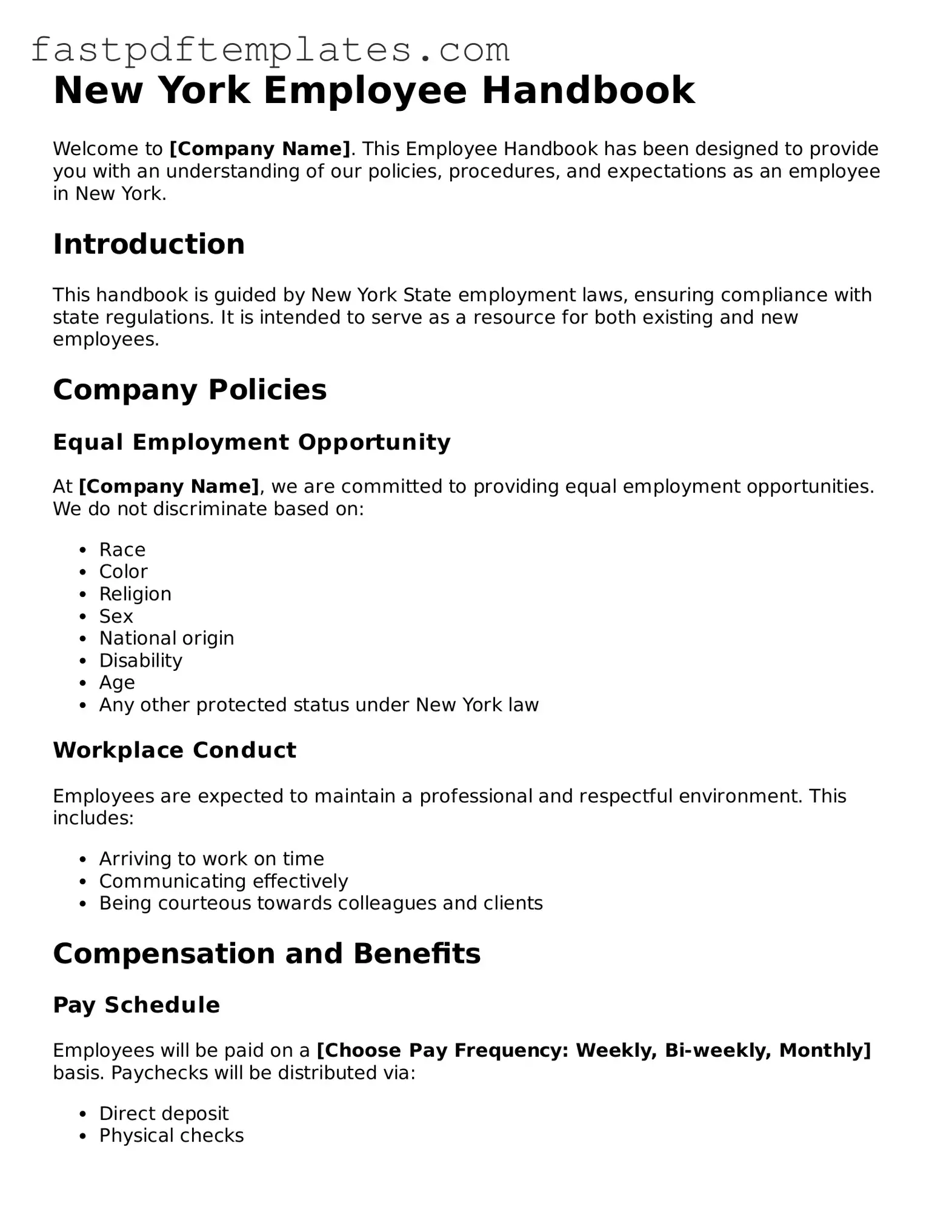New York Employee Handbook
Welcome to [Company Name]. This Employee Handbook has been designed to provide you with an understanding of our policies, procedures, and expectations as an employee in New York.
Introduction
This handbook is guided by New York State employment laws, ensuring compliance with state regulations. It is intended to serve as a resource for both existing and new employees.
Company Policies
Equal Employment Opportunity
At [Company Name], we are committed to providing equal employment opportunities. We do not discriminate based on:
- Race
- Color
- Religion
- Sex
- National origin
- Disability
- Age
- Any other protected status under New York law
Workplace Conduct
Employees are expected to maintain a professional and respectful environment. This includes:
- Arriving to work on time
- Communicating effectively
- Being courteous towards colleagues and clients
Compensation and Benefits
Pay Schedule
Employees will be paid on a [Choose Pay Frequency: Weekly, Bi-weekly, Monthly] basis. Paychecks will be distributed via:
- Direct deposit
- Physical checks
Benefits Overview
Eligible employees have access to the following benefits:
- Health insurance
- Retirement plan
- Paid time off (PTO)
- Employee assistance program (EAP)
Time Off Policies
Vacation Policy
Vacation time will be accrued based on the length of service. Employees should submit requests for vacation at least [Specify Time Frame] in advance.
Sick Leave
All employees are entitled to [Specify Sick Leave Policy] as per New York State law. Sick leave may be taken for any of the following reasons:
- Personal illness
- Medical appointments
- Caring for a family member
Health and Safety
We prioritize health and safety in the workplace. Employees are encouraged to report any unsafe conditions or practices to their supervisor.
Conclusion
This Employee Handbook is a comprehensive guide, but it is not exhaustive. We encourage open communication and are here to assist you should any questions arise. Welcome to the team at [Company Name]!
